It’s a bit of a blur now, pinpointing the exact moment the idea of participating in the Women’s March took root. It started as a vague notion, “Maybe if I were the type,” then morphed into “Perhaps I am that type,” and finally solidified into “We are doing this.” And just like that, plans were hatched, signs were crafted, and come the day, we piled the kids into the minivan and set off towards Raleigh. We hadn’t even pulled away from the curb when we bumped into fellow marchers – our next-door neighbors were joining too! Parking the car, we ran into another neighbor, Crystal (the force behind our MLK trash clean-up day), who, as fate would have it, had extra hats to distribute, which she graciously offered to us.
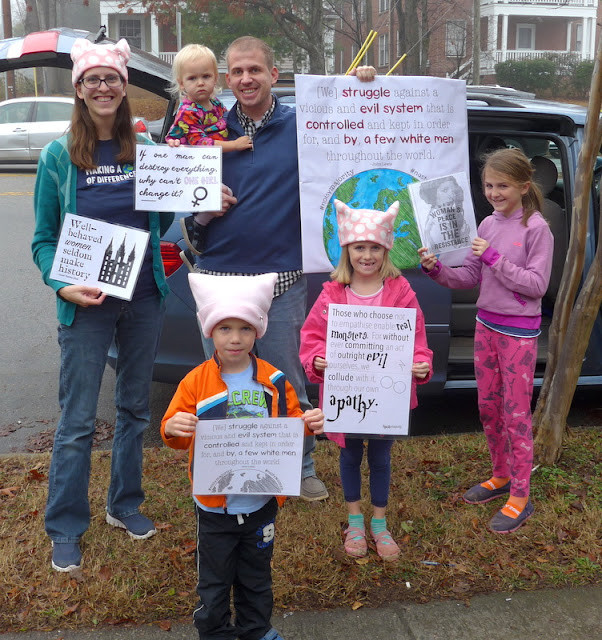 Neighbor offering hats at Women's March
Neighbor offering hats at Women's March
The event organizers made it clear: this was a family-friendly rally. Slogans, whether written or shouted, were to remain decent and inoffensive. And truly, it was a peaceful, uplifting gathering. The stickiest point, the one requiring careful explanation to my children, was the prevalence of the pink “cat” hats and signs. These weren’t just any cat hats; they were “pussyhats,” a term loaded with meaning.
We hadn’t yet navigated the choppy waters of that particular presidential discourse with our kids. And so, I found myself attempting the impossible, explaining to my sweet, innocent daughters – not because of some provocative protester’s sign, but because of the words of the President of the United States:
“Well,” I began, ” ‘pussy’ is, unfortunately, a rude word for ‘vagina.’ And the president used that word when he was bragging to some friends about how he likes to sexually assault women. Hearing him talk about people like that made a lot of people very upset. They believe that men should never speak about women in such a disrespectful way. So, they decided to take back the word and make it a symbol, a kind of mascot for the march. But it’s definitely not a word you should ever use when you mean vagina.”
With that delicate, yet necessary, conversation navigated, the rest of our march unfolded smoothly. The kids were thrilled to take turns holding our signs, each carrying powerful messages.
Inspired by John Lewis’s March trilogy, a graphic novel recounting his experiences in the Civil Rights Movement, I’d chosen a quote from one of his powerful speeches: “[We] struggle against a vicious and evil system that is controlled and kept in order for, and by, a few white men throughout the world.” The graphic novel format, I explained, simply meant it was in comic-book form, not anything inappropriate for them.
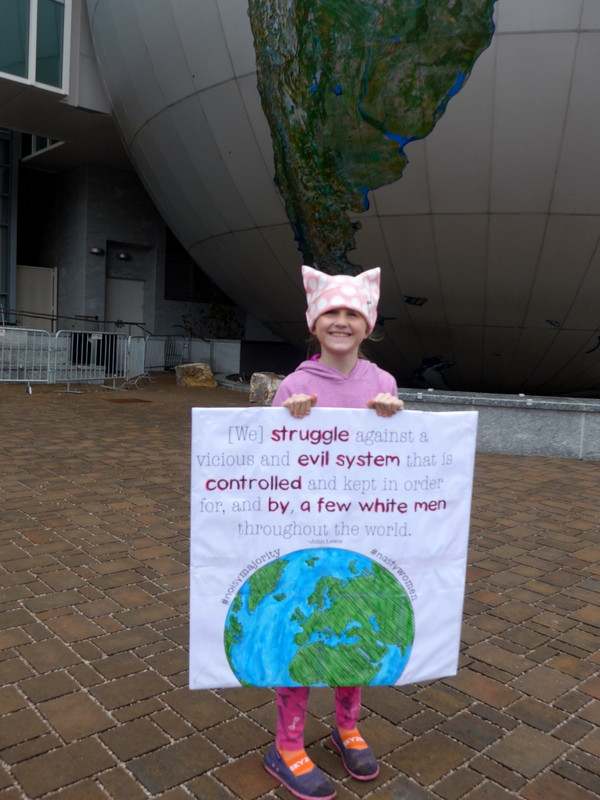 Child holding John Lewis quote sign at Women's March
Child holding John Lewis quote sign at Women's March
Our other signs echoed similar sentiments of strength and resistance, featuring quotes from Malala Yousafzai: “If one man can destroy everything, why can’t one girl change it?”; Laurel Thatcher Ulrich: “Well-behaved women seldom make history”; and J.K. Rowling: “Those who choose not to empathise enable real monsters. For without ever committing an act of outright evil ourselves, we collude with it, through our own apathy.” I could have kept going with more quotes, but we were quickly running out of hands to hold them all!
The journey to the march was quite the march itself. Parking about a mile away due to the swelling crowds downtown, we joined the flow of people. As we walked, our small family group expanded, merging with the collective energy heading towards the rally.
Waiting for a train to cross the tracks became an adventure in itself. The kids were a mix of excitement and apprehension – a train! But also, so loud! What if it jumps the tracks?
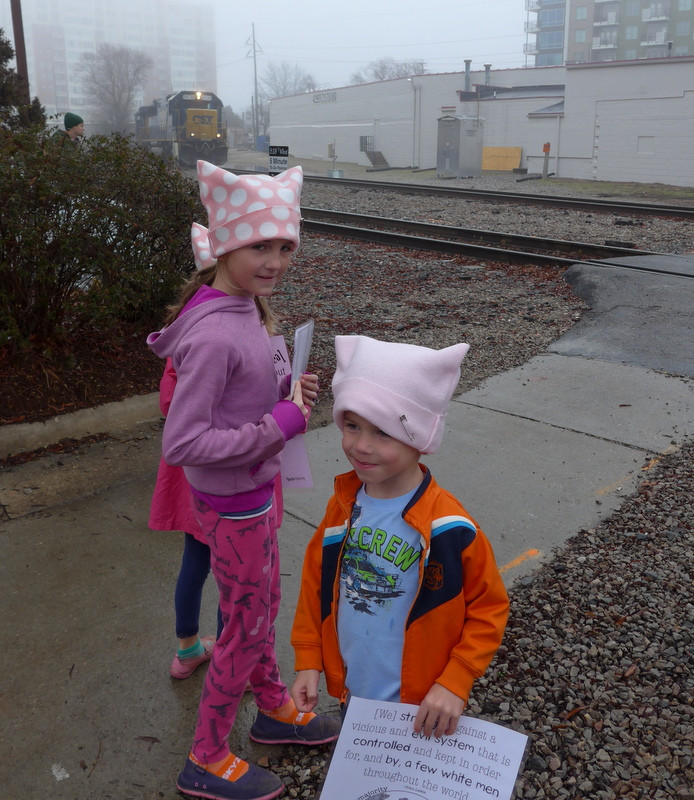 Family waiting for train at Women's March
Family waiting for train at Women's March
Our family of six soon transformed into a sidewalk-spanning group. Even then, we were unprepared for the sheer volume of people already congregated in the designated march area. The pussyhats were everywhere, a sea of pink knitted statements. These hats, initially conceived as a response to derogatory comments made by the then-presidential candidate, had become a powerful symbol of female solidarity and resistance. They were a visual representation of reclaiming a slur and transforming it into something empowering.
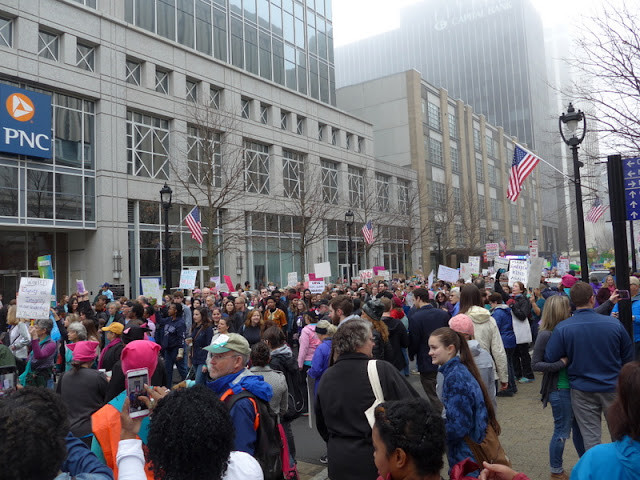 Crowd of Women's March participants
Crowd of Women's March participants
We merged into the moving mass, swept along towards Moore Square.
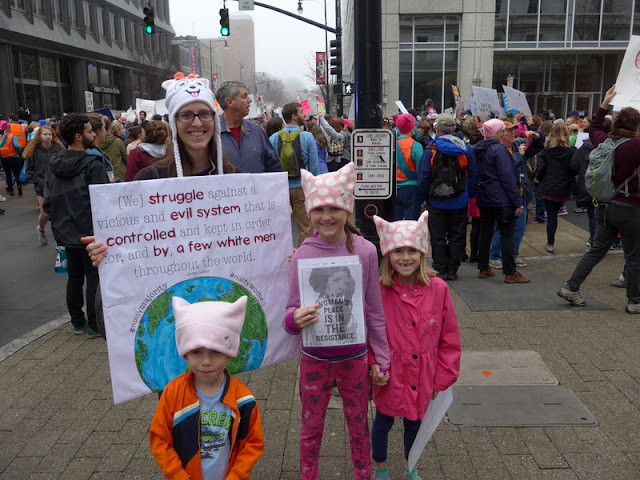 Marchers moving towards Moore Square
Marchers moving towards Moore Square
Andrew took the lead with Zoë in the hiking backpack, her little voice calling “Mama! Mama! Mama!” the entire time. Rachel and Miriam stayed close behind, hands clasped tightly, a silent pact not to let go. Benjamin and I brought up the rear, our hands firmly joined. Getting separated was a constant worry in such a dense crowd. Each child wore a sticker on their backs, hidden under their jackets, with emergency contact information, a precaution that thankfully proved unnecessary.
We reached the epicenter of the rally. Signs and banners filled the air, a testament to the diverse motivations and unified spirit of the marchers.
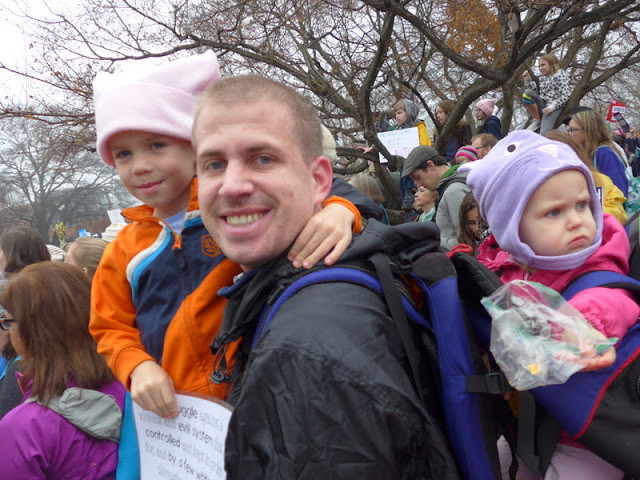 Sign at Women's March epicenter
Sign at Women's March epicenter
One sign declared, with playful defiance, “We will over-comb!”
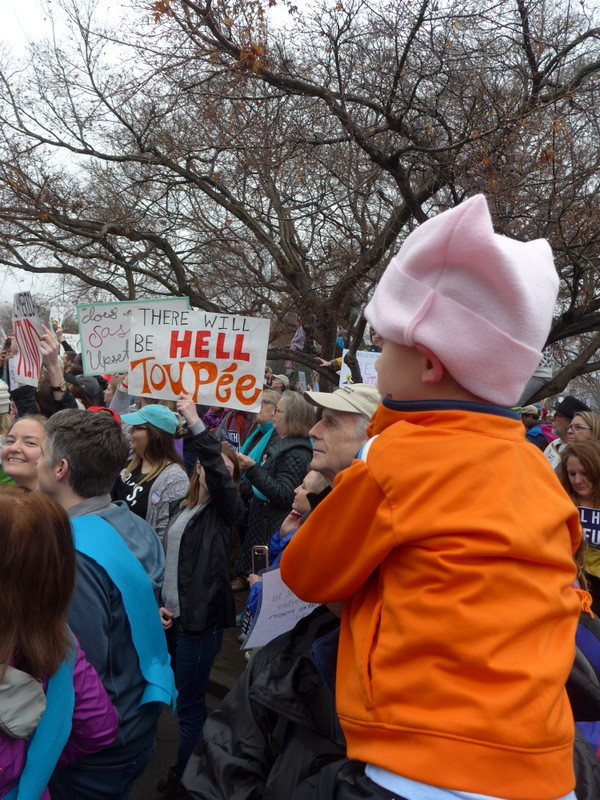 Humorous sign at Women's March
Humorous sign at Women's March
I snapped a photo intending to highlight a “Biden: I’m with her” sign, but another sign, bearing a word usually relegated to the “do-not-say” list, rather stole the spotlight. The word, prominently displayed, was a clear example of the reclamation and empowerment central to the pussyhat movement.
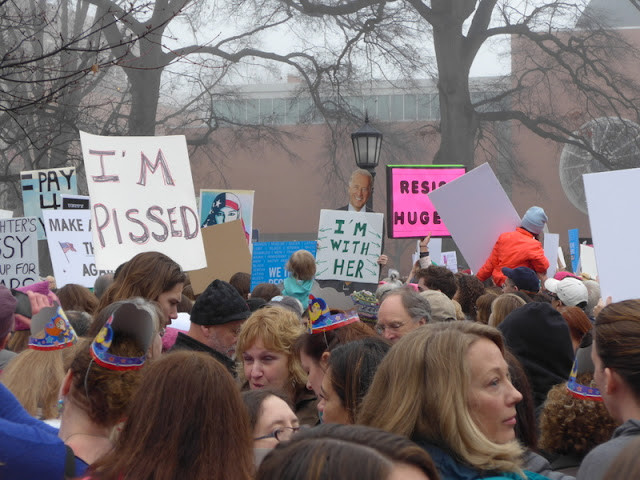 Sign with 'pussy' word at Women's March
Sign with 'pussy' word at Women's March
With over 17,000 participants, the Raleigh Women’s March was a powerful show of resistance. The energy was palpable, a collective voice demanding to be heard.
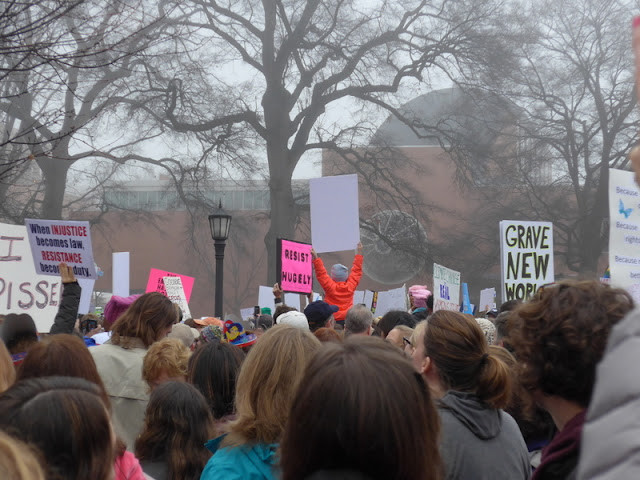 Large crowd at Women's March
Large crowd at Women's March
Princess Leia and the theme of resistance resonated deeply, appearing on numerous posters throughout the march.
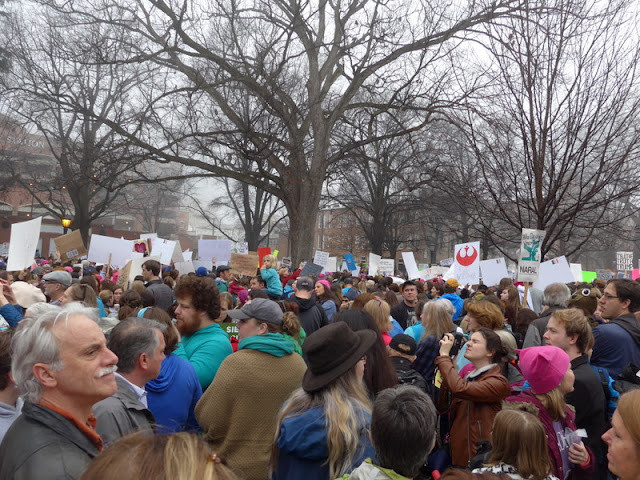 Princess Leia resistance poster at Women's March
Princess Leia resistance poster at Women's March
One designer even made their protest poster available online, which we printed and now hangs in Rachel’s room. It declares boldly, “A woman’s place is in the resistance.”
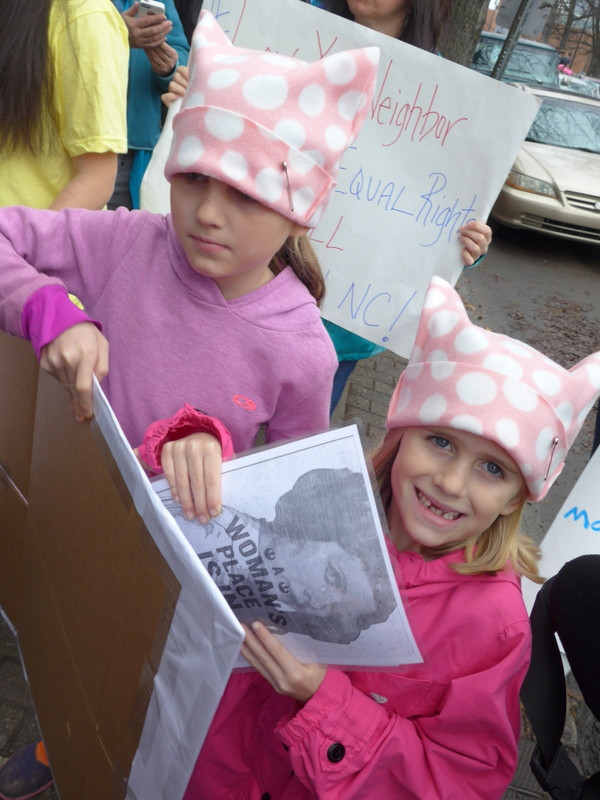 'A woman's place is in the resistance' poster at Women's March
'A woman's place is in the resistance' poster at Women's March
After about an hour at the rally, we decided to call it a day. Family-friendly as it was, rallies aren’t ideally suited for toddlers. Our youngest were signaling their own form of protest, one that wouldn’t be quite so peaceful. Exiting the square took a good ten minutes, and to our surprise, the march continued down the street, stretching all the way to the capitol building, marked by the flashing lights of an ambulance at the very end.
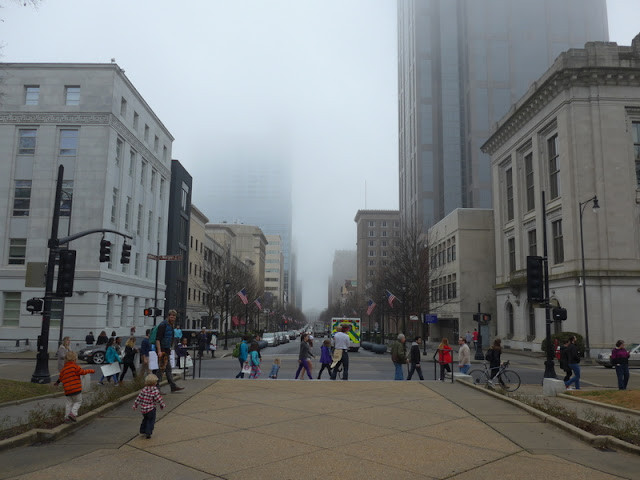 End of Women's March near capitol building
End of Women's March near capitol building
We’d never explored this side of the capitol grounds before, usually picnicking on the opposite side. But Benjamin’s discovery of a George Washington statue might warrant a return visit to this side.
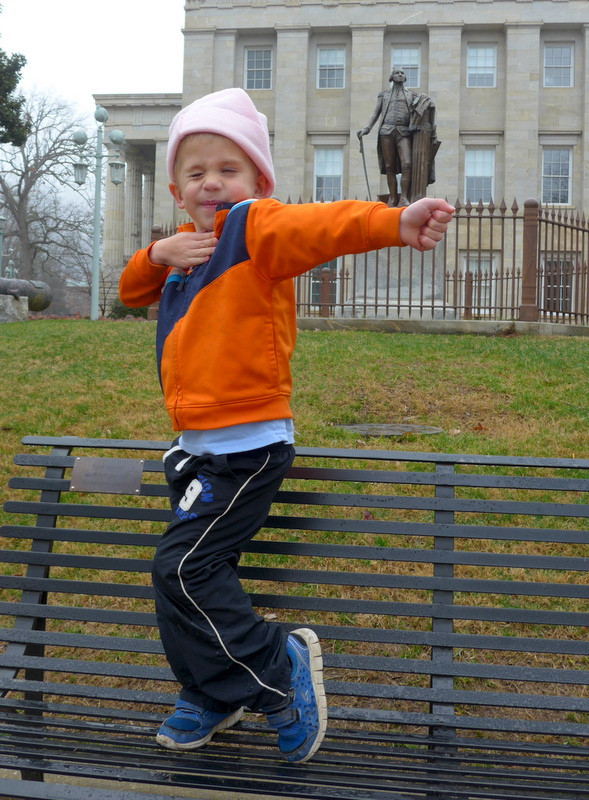 Statue of George Washington near capitol building
Statue of George Washington near capitol building
Crossing the street with the girls in tow marked the beginning of our homeward journey.
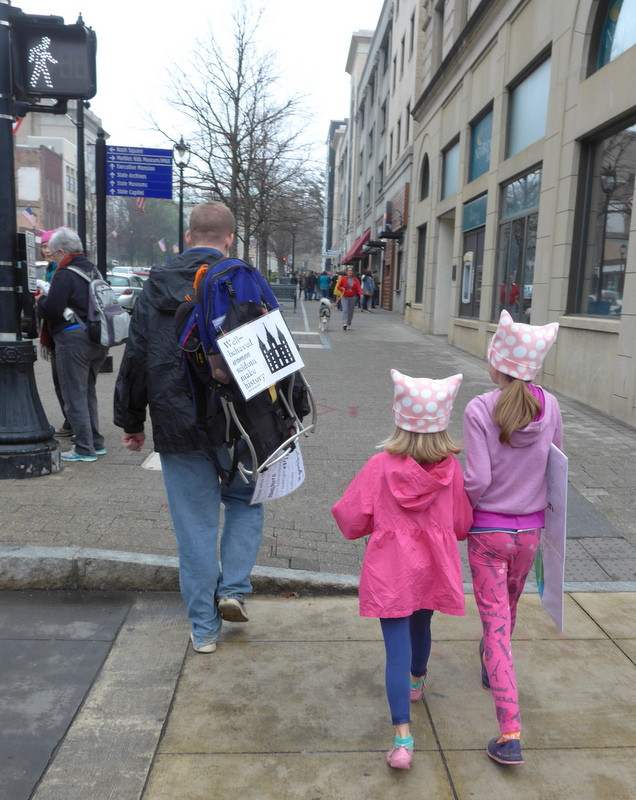 Girls crossing street after Women's March
Girls crossing street after Women's March
And finally, Zoë succumbed to sleep, the exhaustion of the day catching up to her.
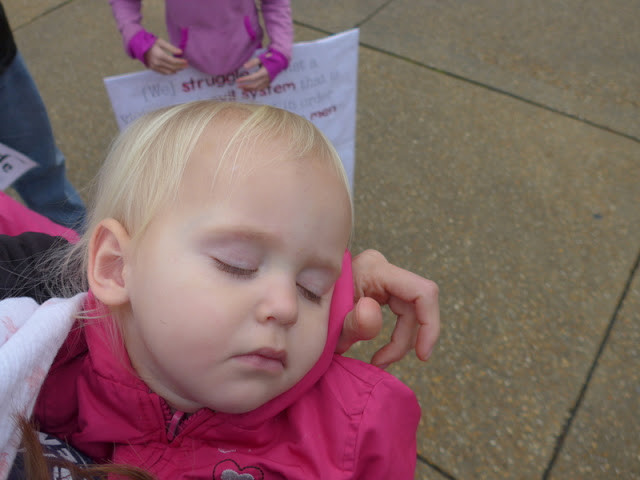 Sleeping child after Women's March
Sleeping child after Women's March
Naps are rare for her, but the early start and navigating a crowd of 17,000 while strapped to her dad’s back proved tiring enough. Nursing to sleep in the front carrier was a welcome comfort after she’d made her parental preferences abundantly clear.
Overall, it was a meaningful day, a powerful experience, and one I’m sure I’ll reflect on further in time. The pussyhats, beyond their provocative name, became a symbol of unity, resistance, and reclaiming language – a powerful message to carry forward.

